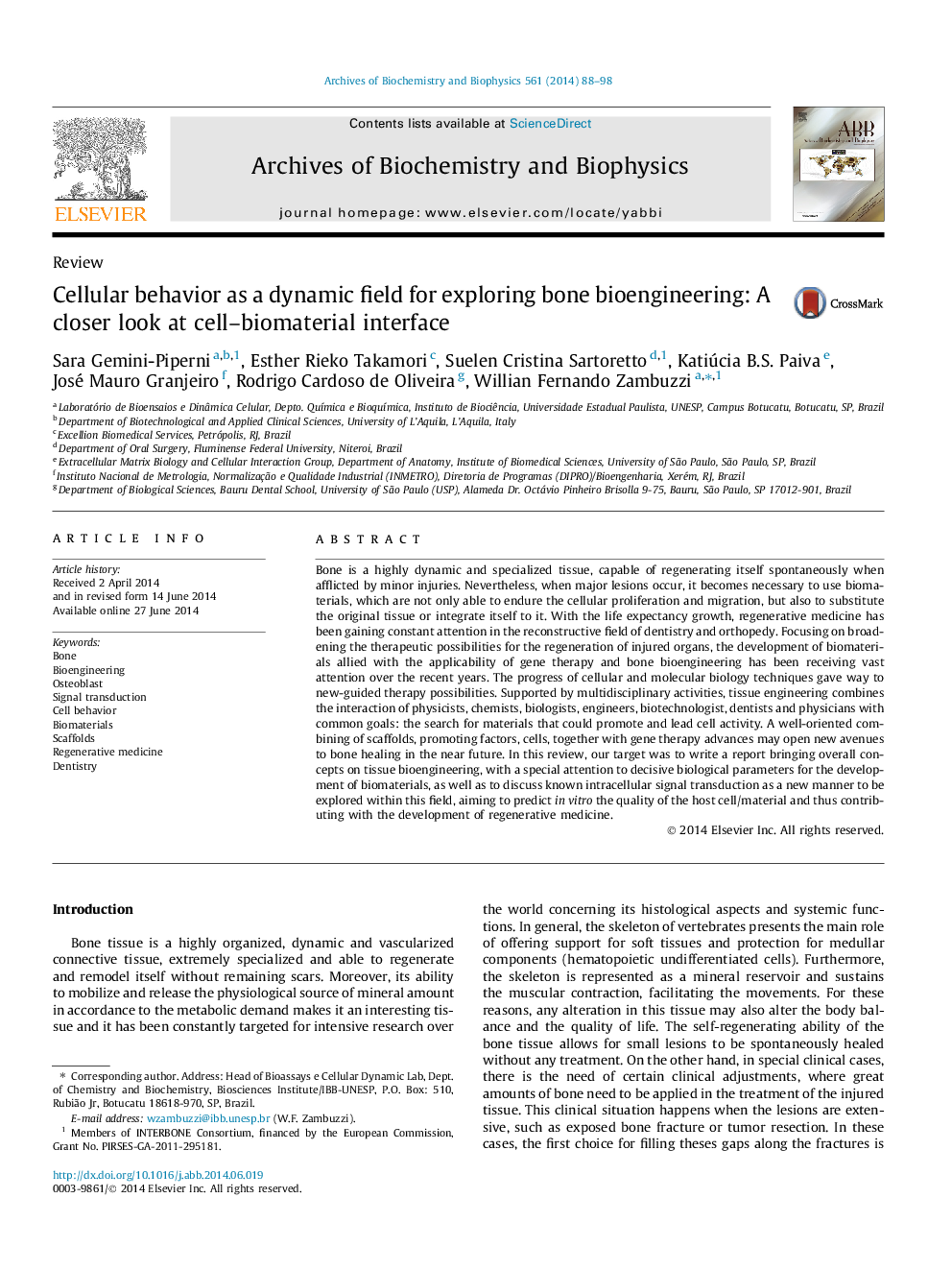| Article ID | Journal | Published Year | Pages | File Type |
|---|---|---|---|---|
| 1925107 | Archives of Biochemistry and Biophysics | 2014 | 11 Pages |
•Bioengineering integrates physical, chemical, and life sciences.•Pulp stem cells are multipotent and able to differentiate into various cell types.•Cells respond differently to the surfaces of different materials.•Cytoskeleton rearrangement involves signals originated from different pathways.•Signal transduction study is one challenge in bone bioengineering.
Bone is a highly dynamic and specialized tissue, capable of regenerating itself spontaneously when afflicted by minor injuries. Nevertheless, when major lesions occur, it becomes necessary to use biomaterials, which are not only able to endure the cellular proliferation and migration, but also to substitute the original tissue or integrate itself to it. With the life expectancy growth, regenerative medicine has been gaining constant attention in the reconstructive field of dentistry and orthopedy. Focusing on broadening the therapeutic possibilities for the regeneration of injured organs, the development of biomaterials allied with the applicability of gene therapy and bone bioengineering has been receiving vast attention over the recent years. The progress of cellular and molecular biology techniques gave way to new-guided therapy possibilities. Supported by multidisciplinary activities, tissue engineering combines the interaction of physicists, chemists, biologists, engineers, biotechnologist, dentists and physicians with common goals: the search for materials that could promote and lead cell activity. A well-oriented combining of scaffolds, promoting factors, cells, together with gene therapy advances may open new avenues to bone healing in the near future. In this review, our target was to write a report bringing overall concepts on tissue bioengineering, with a special attention to decisive biological parameters for the development of biomaterials, as well as to discuss known intracellular signal transduction as a new manner to be explored within this field, aiming to predict in vitro the quality of the host cell/material and thus contributing with the development of regenerative medicine.
